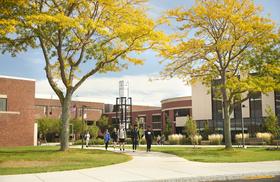During the current economic slowdown, more adults are heading back to community college to get the necessary retraining for more lucrative careers. High school graduates that cannot afford a four-year university right away are looking at community colleges as a less expensive route to the education they need. It sounds like community colleges are the perfect answer, right?
Unfortunately, community colleges are not the white knight that many struggling in a sluggish economy would hope. These institutions are facing diminishing financing themselves, at a time when enrollment demand for a community college education is at an all time high. Many community colleges across the country are facing the inconceivable reality of turning students away at the door because there is simply no more room in the classes to accommodate them. One of the states that has been hit hardest with the community college overload is California – and it doesn't look like there is any relief in sight.
Long Wait Lists and Less Support Available
According to a recent report at the Los Angeles Times, more than 140,000 students were turned away from community colleges in California during the last academic year. This year, the number of students who can't get into classes is predicted to be double. At Cypress College, around 6,200 students were on wait lists for courses last year, with 13,000 more waiting at Bakersfield College and as many as 80,000 in the Los Rios Community College School District in Sacramento County.
Paul Steenhausen, community college expert for the Legislative Analyst's Office, told the Times, "The big story is the number of first-time students – the recent high school graduates - who are being squeezed out. I liken it to an unfortunate game of musical chairs where there's not enough chairs for participants and when the music stops, it's the new guy every time who winds up without a seat."
To make the situation even more challenging, the number of counselors working at community colleges has also been severely decreased due to tight budget restrictions. Since these professionals are the ones students turn to for help in navigating the sometimes complex world of post-secondary education, many students feel like they're swimming upstream without a paddle – and with no visual means of support to ensure they are getting the courses they need most to complete their degree programs.
Jobs are Plenty – But Where're the Applicants?
Some of the training programs that community colleges offer – such as degree and certification programs in the health care industry – provide plenty of opportunities after graduation. In fact, recent numbers reported in California Watch estimate that as many as 97 percent of students graduating from allied health training programs are finding employment right out of school. The problem is not in the job opportunities but in the classes to prepare these professionals; many students are getting turned away from California community colleges without the education they need to get into the workforce.
California Watch reports that only six percent of deans in California said their colleges were equipped to accept all the applicants they received into their programs during 2009 and 2010. Of those that could not accept every student, 78 percent said it was due to a lack of funding, while 76 percent cited a lack of quality internships and apprenticeships through partnerships with health care providers. Three-fourths of deans also stated that they could not afford to hire the necessary instructors for the field.
Tighter Budgets Coming?
This year, Gov. Jerry Brown was sworn in as California's next governor, raising hopes that community colleges may begin to receive some of the additional funding they desperately need. However, shortly after taking office, Governor Brown unveiled a $12.5 billion budget reduction plan that included a $440 million budget cut from community colleges across the state. Instead of additional funding, community colleges are now looking for ways to cut costs even further, according to a report at Fresno City College Rampage.
Scott Lay, president of the California Community College League, told the Rampage, "We expect to see a decline of nearly 250,000 students enrolled this year, down from 2.7 million last year. This equates to roughly 10 percent less of course offerings."
Fresno City College could be faced with a $4.5 million budget cut for the 2011-2012 school year. The deficit will be made up through increased tuition pricing, with $10 more per unit taken. While $10 may initially not seem like much, it reflects a 40 percent increase in tuition across the board, which may discourage many students from pursuing any sort of higher education after high school, as well as hinder adults from getting the additional training they need to return to the workforce.
Brown Likes Tuition Increases
According to Cal Coast News, tuition increases have been recommended by Governor Brown as a way to boost revenue in light of recent budget cuts. Governor Brown proposed hiking California community college fees from $26 to $36 per credit. In response to Brown's suggestion, Chancellor Jack Scott responded, "We can live with that." While the increase was sharper than Scott hoped, it will limit the number of students colleges have to turn away because of budget restrictions.
The community college has become much more challenging and expensive in California and across the country. With less money and resources to go around, the face of this post-secondary education is becoming less accessible at a time when many adults and high school graduates need it most.
Questions? Contact us on Facebook @communitycollegereview.















